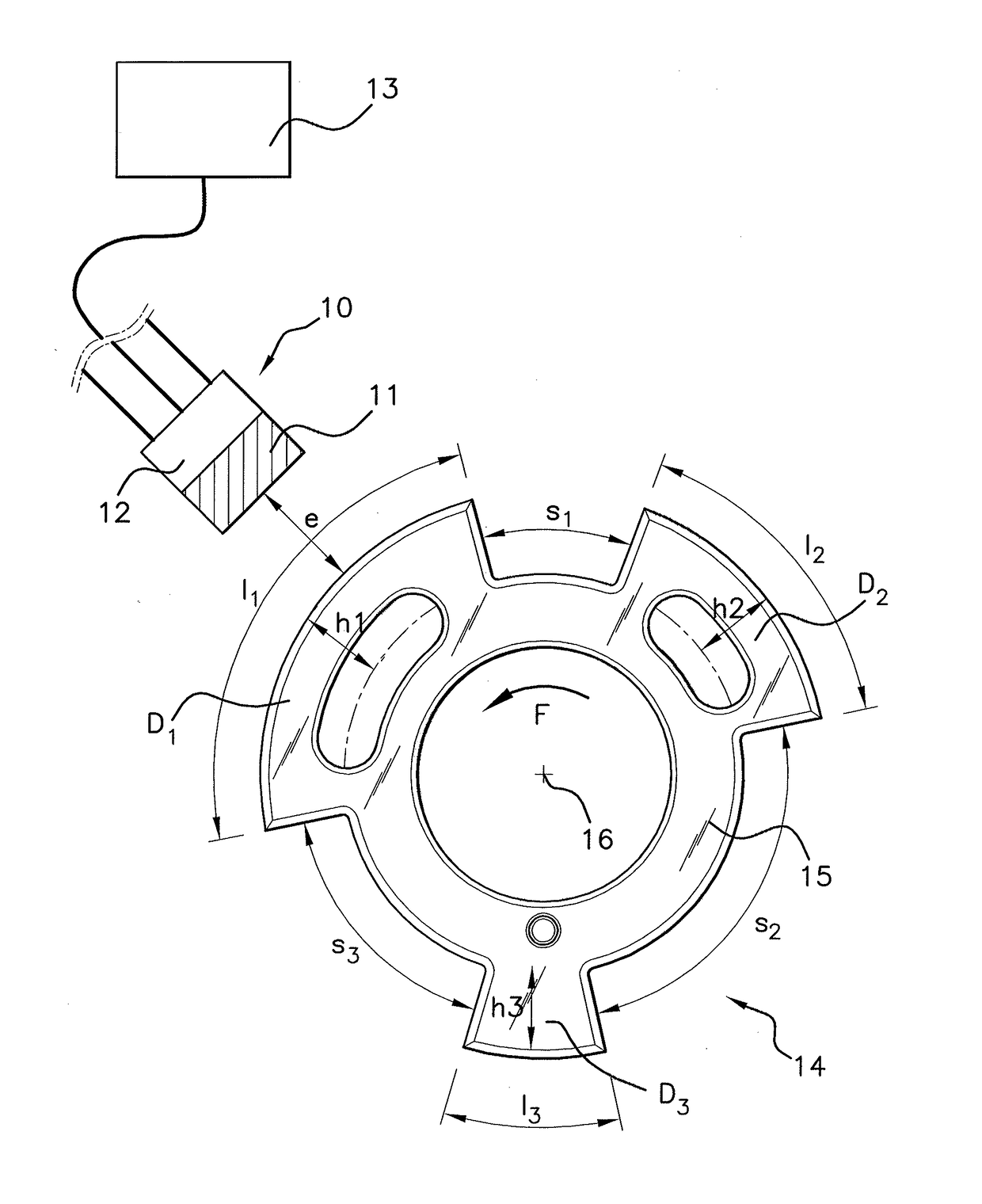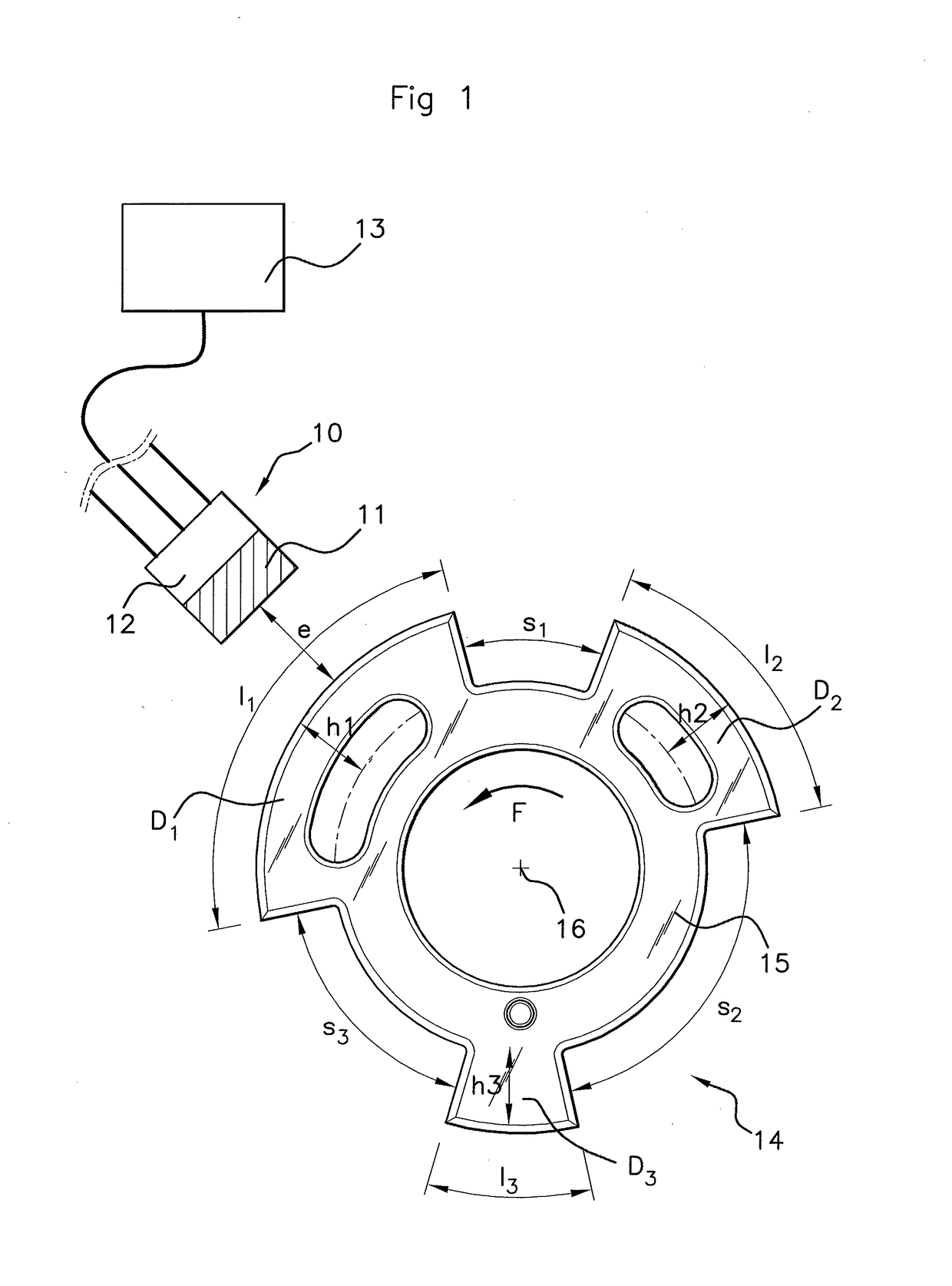Method for automatic calibration of a camshaft sensor for a motor vehicle
a technology of camshaft sensor and automatic calibration, which is applied in the direction of automatic recalibration, conversion of sensor output, instruments, etc., can solve the problems of sensor being sensitive to the positioning of the target on the camshaft and to the geometry of the target, exhibiting often imperfect geometry, and reducing the accuracy of the camshaft. , to achieve the effect of reducing the disadvantag
- Summary
- Abstract
- Description
- Claims
- Application Information
AI Technical Summary
Benefits of technology
Problems solved by technology
Method used
Image
Examples
Embodiment Construction
[0054]According to the embodiment described and depicted in FIGS. 1 to 3, a camshaft sensor 10 comprises a ferromagnetic element 11 and a magnetic field detection means 12 (for example a Hall-effect cell). This sensor 10 delivers a digital signal to a central processor 13.
[0055]A target 14 associated with this sensor 10 takes the form of a metal disk 15 firmly attached to a camshaft 16. This target bears, on its periphery, a plurality teeth D1, D2, D3 (3 in the example depicted) of different heights h1, h2, h3 and of variable lengths l1 to l3 and variable spacings (troughs) s1 to s3. These variable lengths and variable spacings in the way known per se constitute a coding.
[0056]The way in which a sensor 10 plus target 14 assembly works is described hereinafter.
[0057]When the target 14 is rotationally driven (arrow F FIG. 1) by the camshaft 16, sensor 10 perceives a series of variations in the magnetic field B indicative of the length l of the teeth D1, D2, D3 moving past it and of th...
PUM
 Login to View More
Login to View More Abstract
Description
Claims
Application Information
 Login to View More
Login to View More - R&D
- Intellectual Property
- Life Sciences
- Materials
- Tech Scout
- Unparalleled Data Quality
- Higher Quality Content
- 60% Fewer Hallucinations
Browse by: Latest US Patents, China's latest patents, Technical Efficacy Thesaurus, Application Domain, Technology Topic, Popular Technical Reports.
© 2025 PatSnap. All rights reserved.Legal|Privacy policy|Modern Slavery Act Transparency Statement|Sitemap|About US| Contact US: help@patsnap.com



